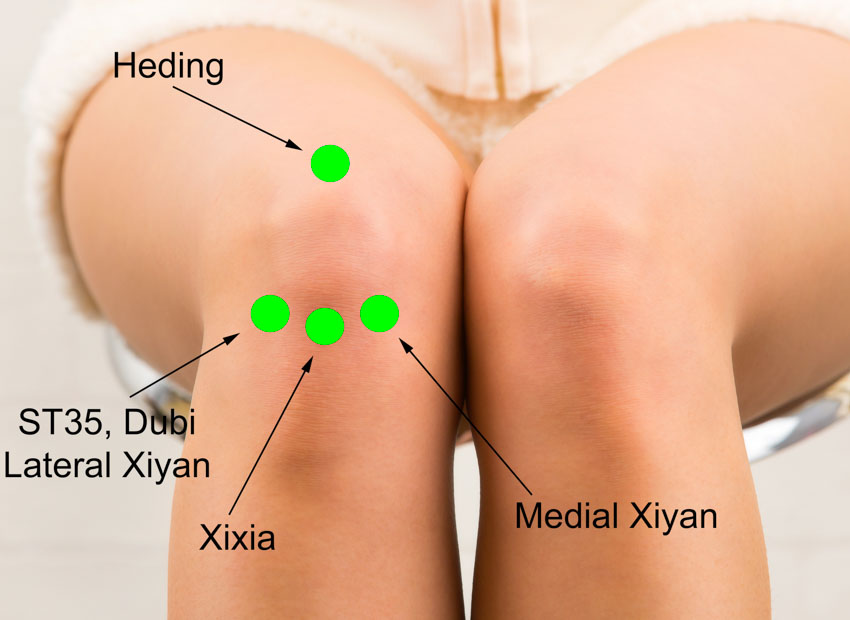
Acupuncture is effective for reducing pain and stiffness and restoring physical functioning in patients with knee osteoarthritis. Researchers from the Second Hospital Affiliated to Fujian University of Traditional Chinese Medicine conducted a clinical trial in Botswana while working on an international medical aid program. [1] In the study, efficacy of regular drug therapy and warm needle acupuncture were analyzed. The warm needle acupuncture treatment protocol had superior patient outcomes.
The study used Hospital Special Surgery Knee Score (HSS), a 100-point scale describing pain levels, functionality, joint stability, and necessity of walking aids and other items, as a measurement parameter. Prior to the treatment, the scores for the warm needle acupuncture group and drug control group were 58.70 ±7.06 and 59.03 ±5.12 respectively. Ten days after treatment, the score in the warm needle acupuncture group demonstrated a more marked improvement, increasing from 58.70 ±7.06 to 67.81 ±8.43. Upon completion of the treatment, the figure was at 70.03 ±5.14, higher than that of the control group at 64.05 ±5.47.
A total of 120 cases of knee osteoarthritis were admitted to the study, with 60 patients in each group. For the drug control group, 18 patients were male and 42 were female. Age range was 40–80 years, and average age was 59.7 ±7.5 years.
Course of knee osteoarthritis ranged from 2–72 months, with an average disease course of 31.0 ±5.2 years. For the acupuncture group, 23 patients were male and 37 were female. Age range was 40–78 years, and average age was 57.7 ±6.5 years. Course of knee osteoarthritis ranged from 2–78 months, with an average disease course of 31.3 ±5.2 years.
Patients complaining of pain and stiffness in the knees, especially in the mornings, were used as subjects in the study. The patients also experienced bone crepitus, and X-rays showed knee osteoarthritis. Those with history of surgery, traumatic injury, atrophic arthritis, ankylosing spondylitis, and gout were excluded. The drug control group was prescribed 75 mg of diclofenac capsules and 20 mg omeprazole tablets, daily for 20 days.
For the warm needle acupuncture group, EX-LE04 (Neixiyan) and EX-LE05 (Waixiyan) were used as main points. As a matched pair, these points are termed Xiyan (膝眼), translated as eyes of the knee (referring to the anatomical hollows delineating the acupoints). The following points were selected as supplementary points:
- ST36 (Zusanli)
- GB34 (Yanglingquan)
- ST36 (Liangqiu)
- SP10 (Xuehai)
- SP9 (Yinlingquan)
Filliform (0.30 × 50mm, 0.30 × 40mm) needles were used for the procedure. A seated position was taken by patients, with legs perpendicular to the floor. Needles were perpendicularly inserted using a tanzhen method, meaning the needles were slightly vibrated upon insertion. After insertion, a mild reinforcing-attenuating manipulation was applied. Upon achieving deqi, needles at Neixiyan and Waixiyan were connected to 2 cm moxa. Moxa was kept 2–3 cm from the skin. One moxa cone was applied to each point during each treatment session. Patients received 20 days of treatment in total, with a two-day break after the first ten days.
Researchers proved that both methods reduce patient HSS scores, but the acupuncture protocol showed better results. Warm needle acupuncture is a safer and more affordable solution for knee osteoarthritis patients.
Reference:
[1] Xu Xin, Wu Mingxia, Clinical Observation on Treating Osteoarthritis of the Knee,Chinese Manipulation and Rehabilitation Medicine, 2019,Vol.10, No.19.


